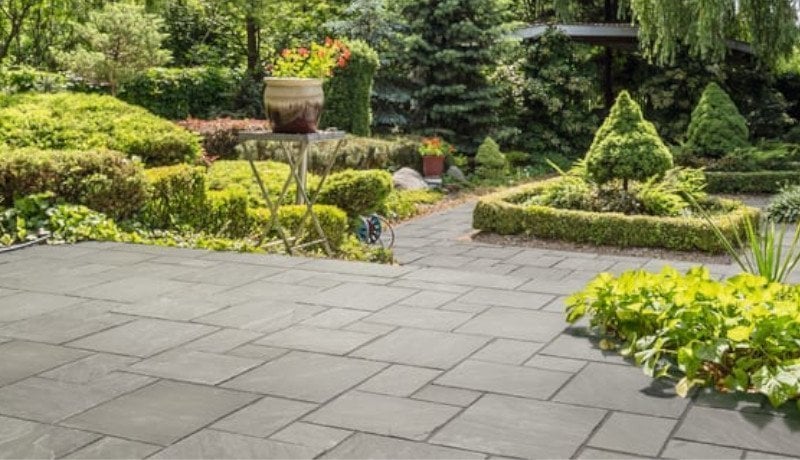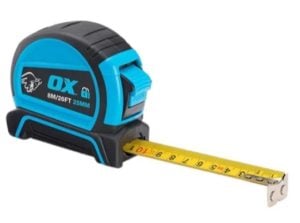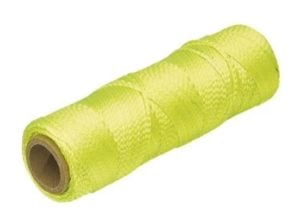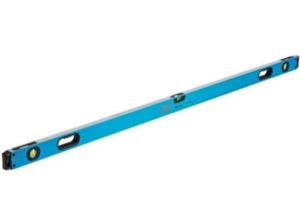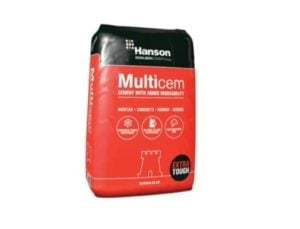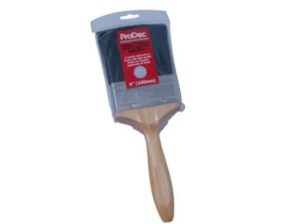Laying Stonemarket Marketstone Sandstone Paving can transform your outdoor space with a natural and stylish look.
Our guide takes you through the process of installing Stonemarket Marketstone onto a full mortar bed.
It can also serve as a general reference for installing other types of sandstone, slate, and limestone paving.
Approx reading time: 8 minutes
Materials and tools you’ll need for a paving project
Materials
- MOT Type 1 aggregate 40mm to dust
- Sharp sand
- Cement
- Stonemarket Fast Point Jointing Compound
4:1 mortar joint can be used in place of compound, if preferred
Tools
- Tape measure
- Spirit level
- String line and pegs
- Spade and shovel
- Rake
- Wheelbarrow
- Rubber mallet
- Trowel
- Bucket
- Soft broom
- General Purpose Brush 3in or 4in
- Protective gloves
- Protective goggles
Equipment
- Plate Compactor
- Cement Mixer
- Circular Saw
Stonemarket Marketstone Indian Sandstone Paving
Available in three natural colour blends, in an ample 20.93m2 mixed sized pack
Planning and Preparation
- Measure and Mark the Area:
- Measure the area you want to pave.
- Calculate the square metres required by taking the length and width of the area in metres, and multiplying together. For example, an area 2m x 3m is 6m2.
- Check enough paving slabs cover the area calculated.
- An additional 5% paving is recommended for wastage and cutting
- Mark the outline with string and pegs.
- Excavate the Area:
- Excavate to a minimum depth 100mm and adjust the excavation depth accordingly to account for the paving slab thickness and intended use or load
- Ensure the base is level and sloped slightly away from buildings for drainage at a ratio of 1 in 80.
Where horizontal crossfall is required, this is a ratio of 1 in 40. - Ensure the final surface of the paving slabs are at least 150mm below the DPC, when being laid up to an existing structure, to prevent problems with rising damp
Laying the Sub-Base
- Add First Layer of Sub-base Material:
- Spread a layer of MOT Type 1 to a depth of 50mm. Use a rake to level it.
Where adjustments are required, ensure this layer does not exceed 75mm in depth
- Spread a layer of MOT Type 1 to a depth of 50mm. Use a rake to level it.
- Compact the First Layer:
- Use a plate compactor to firmly compact the sub-base.
Check for levelness and adjust as necessary.
- Use a plate compactor to firmly compact the sub-base.
- Add Second Layer of Sub-base Material:
- Spread another layer of MOT Type 1 to a depth of 50mm. Use a rake to level it.
Where adjustments are required, ensure this layer does not exceed 75mm in depth
- Spread another layer of MOT Type 1 to a depth of 50mm. Use a rake to level it.
- Compact the Second Layer:
- Use a plate compactor to firmly compact the sub-base.
Check for levelness and adjust as necessary.
- Use a plate compactor to firmly compact the sub-base.
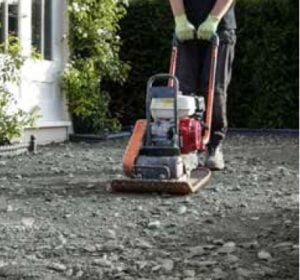
MOT Type 1 is available at our branches in bulk bags or loose tipped loads
Our knowledgeable staff can help you calculate the exact quantities needed for your project, ensuring you get just the right amount for your needs.
Setting the Mortar Layer
- Prepare the Mortar Mix:
- Create a mix of 1 part cement and 4 parts sharp sand. The mixture should be ‘wet’ and workable.
- Spread the Mortar
- Working in sections, starting from one corner, lay a 30-40mm thick layer over the compacted sub-base
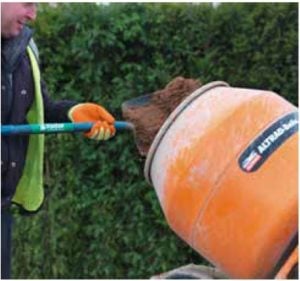
Laying The Paving Slabs
Prime the Paving Slabs:
Paste to the rear of the paving a slurry backing, prior to laying.
Do this as you go, one at time, as the paving slabs are laid.
Place the Slabs:
Start from a corner or a fixed point. Lay the first slab on the mortar bed and tap it gently with a rubber mallet to bed it in. Use a spirit level to check for levelness.
Joint Gaps:
Leave a 10mm gap between slabs for jointing. Use spacers if needed to maintain uniform gaps.
Continue Laying:
Continue laying the slabs, ensuring each one is level and at the correct height. Keep checking the alignment with a string line and use the spirit level regularly.
Finishing The Installation
Cutting Slabs:
If you need to cut slabs to fit, use a suitable stone cutter or angle grinder, with water and dust suppression and a diamond tipped blade.
Always wear protective gear.
Jointing:
Once the slabs are laid, fill the joints with a jointing compound or a mortar mix.
For a mortar joint, use a mix of 4 parts sand to 1 part cement.
Apply the jointing material and compact it into the joints.
Cleaning and Sealing:
After the joints have set, clean the surface with a soft broom.
Consider sealing the slabs to protect them from staining and weathering.
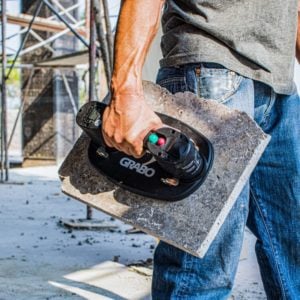
Take The Hard Work Out Of Heavy Lifting With The Grabo Pro Vacuum Lifter
Make your paving project a breeze with Grabo Pro Vacuum Lifters!
These handy tools are perfect for lifting and positioning heavy paving stones, making the job easier and reducing physical strain. Just place the unit on the slab, start the sealing process, and the auto-stop function and easy-to-read digital display will let you know when the seal is secure and ready to lift. Releasing the seal is just as simple with the press of a button.
Grabo Pro Lifters come with a standard seal, perfect for flat or level surfaces, such as smooth sandstone, smooth limestone, lightly textured concrete, or porcelain paving.
Grabo offers a range of seal accessories to enhance the lifter’s performance. The Grabo Rock Seal, for example, is designed for surfaces with variations in height up to 10mm, making it ideal for slate, rough concrete, or riven paving like the Stonemarket Marketstone.
Using Grabo Pro Vacuum Lifters can make your paving installation smoother, safer, and more precise.

FREE delivery is available if your delivery address is within a 20 mile radius of one of our branches. We deliver Monday to Friday, between 8am and 5pm and usually within 3 working days of receiving your order.



